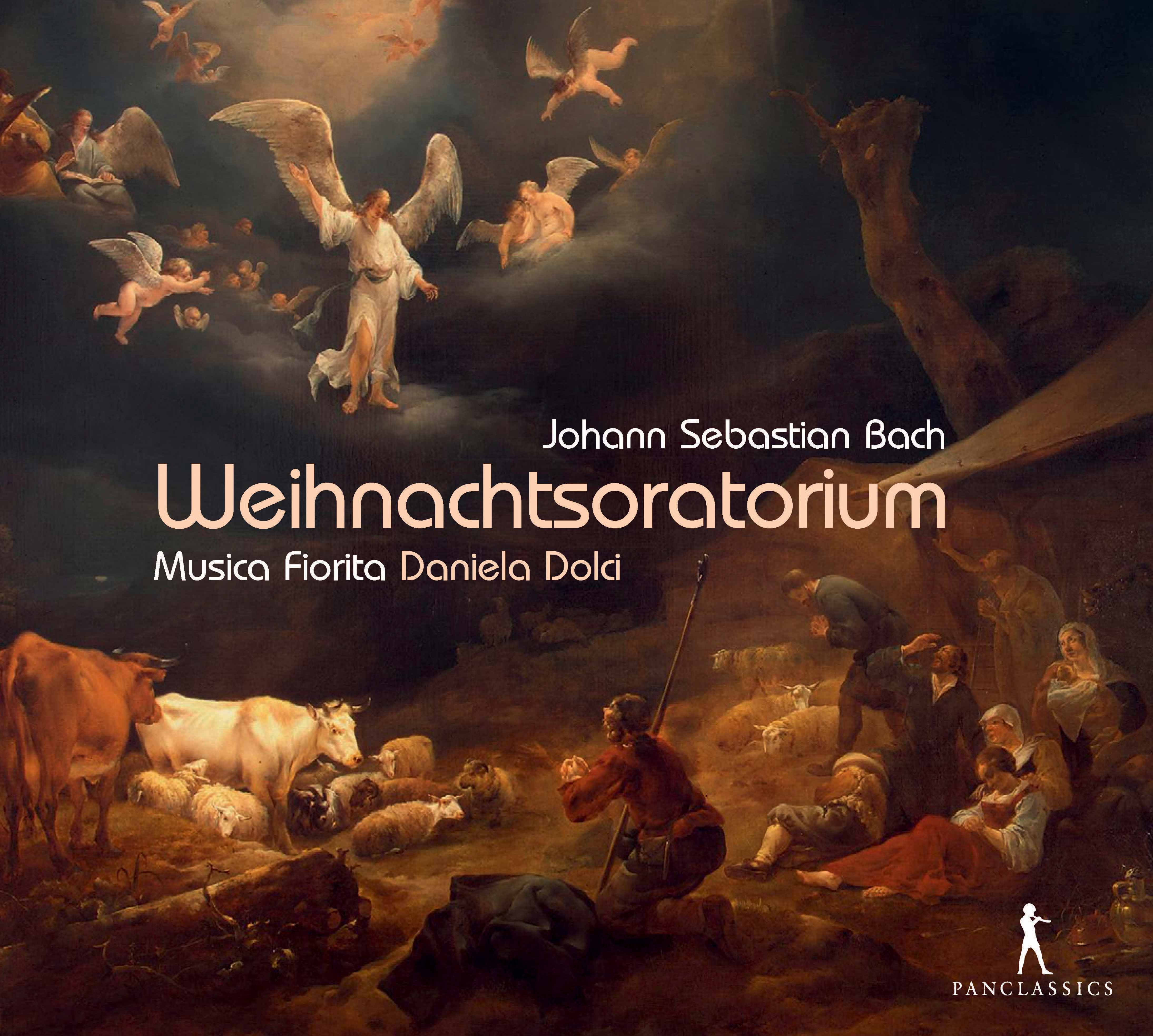 Musica Fiorita, Weihnachtsoratorium [Bach], Pan Classics (PC 10393), 2017. https://www.musicafiorita.ch/
Musica Fiorita, Weihnachtsoratorium [Bach], Pan Classics (PC 10393), 2017. https://www.musicafiorita.ch/
Under the direction of Daniela Dolci, Musica Fiorita promotes historically informed performance practices for repertoire from the late Renaissance and Baroque eras. Performing on period instruments, the ensemble’s members seek to recreate the sounds and emotions of Johann Sebastian Bach’s Weihnachtsoratorium (Christmas Oratorio) on a brilliant new two-disc recording.
Our Historic Brass Society membership will certainly enjoy the contributions of the ensemble’s outstanding trumpet section of Jean-François Madeuf, Henry Moderlak, and Julian Zimmermann. From the first cantata’s opening chorus, “Jauchzet, frohlocket,” the brass executes the work’s challenging lines with heroicism and brilliance. With an exuberant, lilting feeling of “one,” the entire ensemble most successfully projects the movement’s praiseful affect. In the first cantata’s No. 8, “Großer Herr und starker König,” an aria featuring trumpet and bass, Madeuf weaves the challenging solo material seamlessly into the vocal line. In Cantata No. 6’s exigent No. 54, “Herr, wenn die stolzen Feinde schnauben,” Madeuf displays an elegant, understated approach to this difficult music. In the fourth cantata’s No. 42, “Jesus richte mein Beginnen,” Madeuf sets aside his trumpet to join Oliver Picon on natural horn for this chorus’s florid brass flourishes.
The closing number is the sixth cantata’s virtuosic No. 64 “Nun seid ihr wohl gerochen,” long held by trumpet players as one of the Baroque repertoire’s most demanding excerpts; here, the skilled trumpet section handles the challenges of this movement with dexterity and aplomb. Madeuf’s quick, short pickups are a perfect match for the swift upbows of the string players and the text of the singers, appropriately and subtly leading the listener to beat one. Madeuf’s facile upper register and virtuosic technique continue to set a new standard for what is possible on the natural trumpet.
While the engineering captures the resonance of the string, wind, and brass instruments very well, the microphone placement and mixing does tend to obscure the diction of the singers. On the other hand, the room and engineering enhances the brass players’ crisp staccatos most favorably.
While this reviewer focused on the brass playing for this organization’s primary audience, one must note that the disc’s outstanding singing and stylish string playing also contribute to a fine overall performance. It is worth noting that in this recording, on these instruments, the brass and woodwinds are symbiotic complements rather than competitive adversaries. On the whole, this is a wonderful recording of a truly magnificent piece.
-- Jason Dovel



